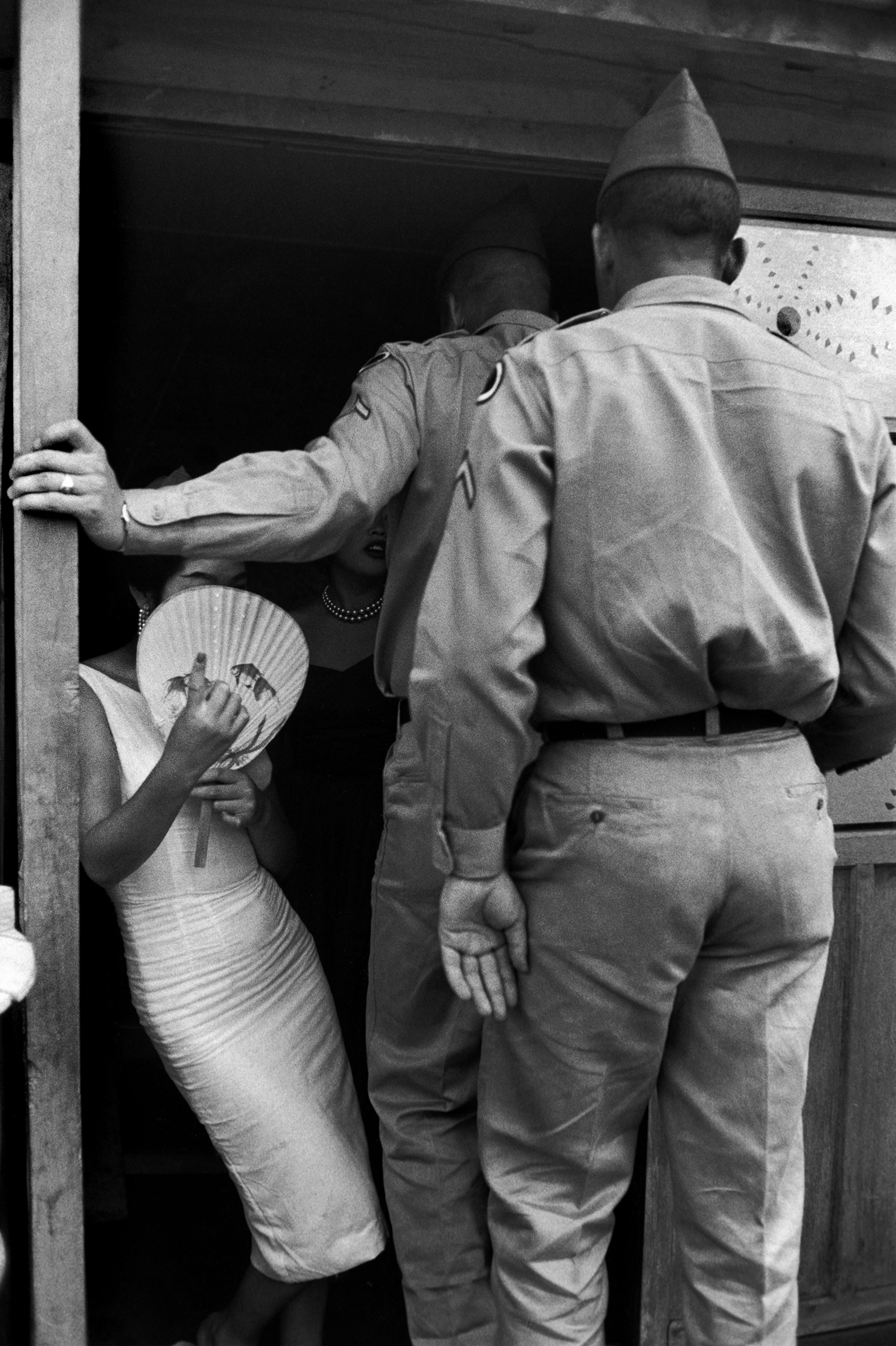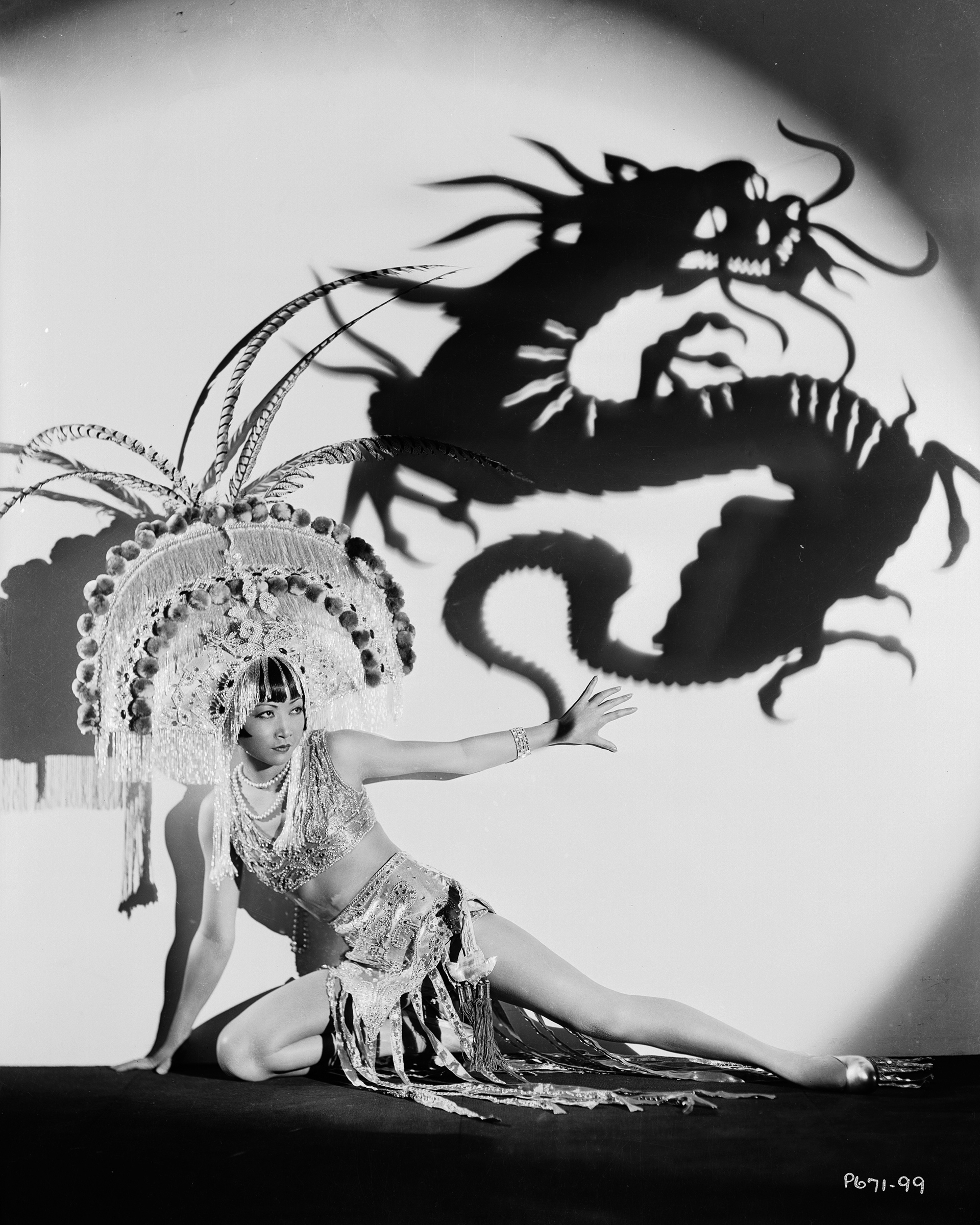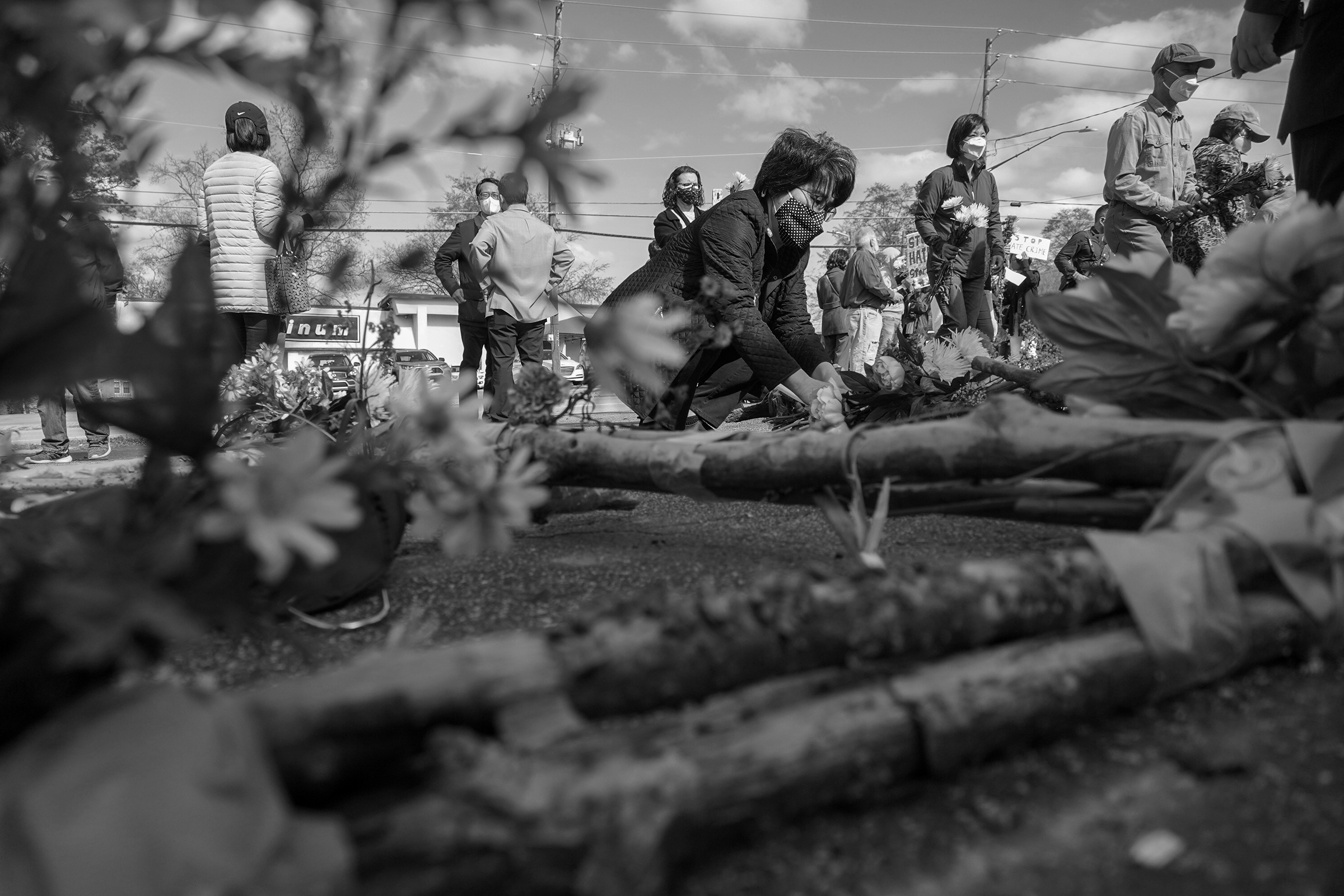
In the weeks since eight people, six of whom were Asian women, were killed in a mass shooting at three massage businesses in the Atlanta area, the conversations prompted by the event have continued—as has the fear felt by many Asian and Asian American women, for whom the violence in Georgia felt intimately familiar.
The mass shooting followed a year of increased anti-Asian violence and racist attacks, which advocates say has been fueled by xenophobic rhetoric about the COVID-19 pandemic. Stop AAPI Hate, a reporting database created at the start of the pandemic as a way to chart the attacks, received 3,795 reports of anti-Asian discrimination between March 19, 2020 and Feb. 28, 2021; of those attacks, women reported hate incidents 2.3 times more often than men.
However, in a press conference following the shooting spree, Captain Jay Baker, a spokesperson for the Cherokee County, Ga., sheriff’s office, said that the suspect, a white man, claimed the attack was “not racially motivated.” Instead, the suspect had claimed a “sexual addiction” as explanation for his alleged targeting of the spas he reportedly frequented, to “take out that temptation.” Baker, who has since been removed as the spokesperson for the case, may not have said it explicitly, but the message was clear: the motive was supposedly rooted in misogyny, not racism.
But to see those two forces as entirely separate is to erase an important layer of context. As many Asian American women pointed out in the wake of the attack, racism and misogyny reinforce a shared narrative—and, due in large part to historical factors, Asian American women often experience that connection in a unique and troubling way.
Get your history fix in one place: sign up for the weekly TIME History newsletter
“Lewd and Immoral”
A reductive view of Asian women as objects of desire—or even worse, a “moral contagion”—is a narrative that dates back as far as the early 19th century, says Judy Tzu-Chun Wu, Director of the Humanities Center and Professor of Asian American Studies at UC Irvine. “This act of violence goes back to the ways in which Asian women especially are perceived as having this kind of dangerous form of sexuality that is affecting American society,” she says of the Atlanta shooting.
That perception did not evolve by accident, she adds. In fact, the U.S. government has played a major role in cementing hypersexualized stereotypes of Asian women with both state and federal legislation.
While the Chinese Exclusion Act of 1882 is one of the few Asian-American milestones taught in many U.S. history classes, a little-known piece of restrictive legislation preceded it, called the 1875 Page Act—one of the earliest pieces of federal legislation to restrict immigration. Catalyzed by the white majority’s fears that an influx of approximately 300,000 Chinese immigrant workers would take their jobs, the Page Act explicitly targeted laborers from “China, Japan, or any Oriental country.”
The bill also effectively halted the immigration of Chinese women into the U.S.: though the text of the law did not outright ban their entry, it blocked “the importation into the United States of women for the purposes of prostitution.” At the time Asian women were superficially profiled as prostitutes and denigrated as being unclean—just the previous year, an extremely contentious lawsuit had begun over the detainment of 22 Chinese women who were accused of being “lewd and debauched” after arriving at the San Francisco harbor without husbands—so in practice this law allowed immigration officials wide leeway to keep them out of the country.
The Page Act’s exclusion of women was deliberate; in doing so, it prevented Chinese men from starting families—a “conscious part of trying to restrict Asian immigration,” according to Wu.
Unable to become fathers and struggling with increasingly limited job opportunities, Asian American men were effectively emasculated. And for the relatively few Asian women in the U.S.—and the countless others who remained beyond the country’s borders, at that time and in the future—the false idea that the only reason they would come to the U.S. would be “lewd and immoral,” as the Page Act put it, had been written into law.

The Military-Sexual Complex
After the 19th century came to an end, U.S. policy continued to reinforce hypersexualized stereotypes about Asian women, especially as the country expanded its military presence in the Asia Pacific region. Military culture of the time viewed drinking, gambling, partying and visiting brothels as a common, even necessary, pastime of servicemen abroad. During conflicts in Japan, Korea, Vietnam, the Philippines and elsewhere, the local women were on the receiving end of that assumption.
“The overall pattern is that there are these places that become a site for warfare and militarization. And local women who are living through this devastation don’t usually have a lot of options, especially women who are working-class or poor,” says Ellen Dionne Wu, an associate professor at Indiana University Bloomington.
After World War II, U.S. military authorities in Korea began taking control of some of Japan’s military-run brothels, where an estimated 200,000 enslaved “comfort women” were deployed to provide sexual services to Japanese troops. The U.S. also established its own “camp towns” in the 1940s, as military authorities worked with the South Korean government to license areas with bars and clubs near U.S. military bases. These camp towns were set up specifically to entertain American troops, and sex work was part of that ecosystem. In a crackdown on sexually transmitted diseases among servicemen, “entertaining girls” at camp towns—including licensed sex workers, dancers, waitresses and bar girls—were routinely tested and treated. In 1965, 85% of GIs surveyed reported having “been with” or “been out with” a prostitute.
“There was what is described as a military-sexual complex. You had large numbers of American men going abroad and a plan by the military to create rest and recreation sites where men can go and blow off steam,” says Judy Tzu-Chun Wu. “In those sites, it’s Asian women who are providing sexual gratification.”
The women who were recruited to work at camp towns were often orphans or impoverished women with no other way to make a living. Camp town women often found themselves trapped, where they were charged rent for the rooms in which they serviced men and expected to pay for all of the items needed to entertain the American soldiers.
“White men have been trained, peer pressured and hazed by the U.S. military to release their anxiety, self-loathing, and hatred of the enemy onto Asian women’s bodies,” Khara Jabola-Carolus, the executive director of Hawaii State Commission on the Status of Women wrote in a tweet following the mass shooting. “From Olongapo to Okinawa. For generations. This is what we are up against.”
On the Home Front

As wars ended, many American troops came home with their wartime perceptions of Asian women as submissive and sexually available. But the fetishization of Asian women wasn’t limited to military zones. It would also manifest in popular culture, where stereotypes dominated depictions of Asian and Asian American women, resulting in two binary and highly sexualized tropes known as the Lotus Flower and the Dragon Lady.
The Lotus Flower, or China Doll, trope reinforced stereotypes about Asian women being submissive, sexually subservient, feminine and meek. Such characters often meet tragic ends, as in the 1904 Puccini opera Madame Butterfly, about a Japanese woman who kills herself after her white American lover abandons her and their son. Perhaps most notoriously, in Stanley Kubrick’s 1987 film Full Metal Jacket, a Vietnamese prostitute solicits two white American troops with a line that went mainstream in the late ‘80s when 2 Live Crew prominently sampled it in the song “Me So Horny.” The audio was also sampled by Sir Mix-a-Lot for his 1992 hit “Baby Got Back” and has since made appearances in movies like The 40-Year-Old Virgin and shows like Family Guy, having become an easy laugh at the expense of Asian women.
In contrast, the Dragon Lady trope paints Asian women as deceitful, villainous and cunning, using their sexuality as means to manipulate and gain power, a feminine embodiment of “Yellow Peril.” This trope historically is most associated with Anna May Wong, who despite being a groundbreaking actress was relegated to playing dangerously wicked villainesses or exotic slave girls during her career in films like 1931’s Daughter of the Dragon and 1932’s Shanghai Express. More contemporary examples include Lucy Liu’s violent assassin O-Ren Ishii from Quentin Tarantino’s Kill Bill: Vol. 1 and Liu’s cold, sexually manipulative character Ling Woo on the television series Ally McBeal.
And while racist tropes are dangerous in and of themselves, the harm wrought by these widespread stereotypes is even more damaging given the severely limited representation of Asian American women in media. According to UCLA’s 2020 Hollywood Diversity Report, in 2018, Asians accounted for only 4.8% of all film roles. (In mainstream movies, that is: one 2002 study found over-representation of Asian women in victim roles in violent pornography.)
In the 1980s and ’90s, a boom of the mail-order bride industry showed another real-world ramification of such stereotypes: Men upset about the rise of feminism began looking overseas for foreign brides who would abide by “traditional values,” Feelie Lee, director of International Projects at UCLA’s office of International Students and Scholars, told the L.A. Times in 1986. Newspaper and magazine advertisements enticed male readers with “Gorgeous Pacific Women” and “Pearls of the Orient” dressed and posed in highly eroticized cultural dress, in what would become a multi-million dollar industry.
“If you look at those want ads, it’s very much racialized and sexualized. So, it’s kind of a cultural mentality but it’s also expressed very concretely in terms of who’s providing sex work and the market effects,” says UC Irvine’s Wu. “It’s not just art in people’s heads, but it’s actually expressed in people’s realities.”
After traveling across the world alone to live with their new husbands, a high proportion of these women reported facing domestic violence.
The Legacy of the Page Act
These tropes, along with the model minority myth—the false idea that Asian Americans are inherently more successful than other ethnic minorities—leave Asian and Asian American women simultaneously fetishized and despised, hypervisible as subjects of desire but disposable as people.

Although Daoyou Feng, Hyun Jung Grant, Suncha Kim, Soon Chung Park, Xiaojie Tan and Yong Ae Yue, the six Asian women who were killed on March 16, were not identified as sex workers, horrific jokes on social media after the shootings hearken back uncomfortably to the discriminatory assumptions of the Page Act.
“The women who were killed faced specific racialized gendered violence for being Asian women and massage workers,” Red Canary Song, a grassroots Chinese massage parlor coalition in New York City, wrote in a statement following the Atlanta shootings. “Whether or not they were actually sex workers or self-identified under that label, we know that as massage workers, they were subjected to sexualized violence stemming from the hatred of sex workers, Asian women, working class people, and immigrants.”
For the victims, this fatal violence happened at the intersection of not only race and gender, but also class—three aspects that were central to the Page Act, the repercussions of which are still being felt today.
“Whether Asian American women are desired or hated or both,” Judy Tzu-Chun Wu says, “they are not understood as and permitted to be fully human, with their own agency and dreams.”
More Must-Reads From TIME
- The 100 Most Influential People of 2024
- How Far Trump Would Go
- Scenes From Pro-Palestinian Encampments Across U.S. Universities
- Saving Seconds Is Better Than Hours
- Why Your Breakfast Should Start with a Vegetable
- 6 Compliments That Land Every Time
- Welcome to the Golden Age of Ryan Gosling
- Want Weekly Recs on What to Watch, Read, and More? Sign Up for Worth Your Time
Write to Cady Lang at cady.lang@timemagazine.com